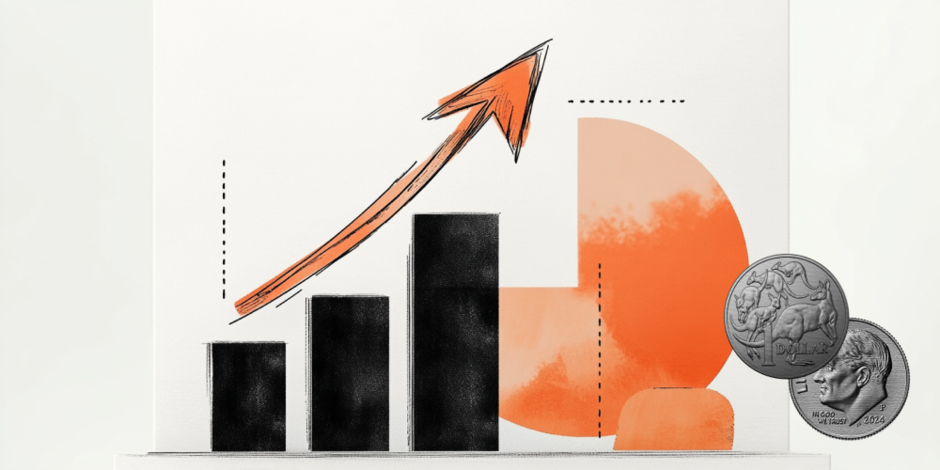Created
: 2025.04.10














![]() 2025.04.10 05:28
2025.04.10 05:28
The Australian Dollar strengthened during Wednesday's American session, climbing toward the mid-0.6100s as the US Dollar continued to retreat amid a risk-on rally in global markets. The pair rebounded sharply after US President Donald Trump abruptly paused most tariffs for 90 days, sparking a surge in equities and helping risk-sensitive currencies.
The Fed's March Mmeeting Mminutes, released during the session, revealed policymakers are grappling with "difficult tradeoffs" due to persistent inflation pressures and a weakening growth outlook. From a technical standpoint, AUD/USD remains biased to the downside despite Wednesdaytoday's bounce, as momentum indicators and moving averages continue to favor sellers.
AUD/USD surged toward the top half of its intraday range but remains below major technical hurdles, with its broader trend still skewed to the downside. While price action turned higher, technical indicators paint a mixed picture.
The Moving Average Convergence Divergence (MACD) continues to print red bars, reinforcing a bearish trend despite today's rally. The Relative Strength Index (RSI) hovers just below 50, reflecting a flat yet slightly negative tone. Interestingly, the Commodity Channel Index (CCI) shows a buy signal, while the Stochastic oscillator sits in neutral territory, highlighting a lack of any strong conviction.
Moving averages remain clearly bearish. The 20-day, 100-day, and 200-day Simple Moving Averages all slope downward, offering resistance ahead. The 10-day Exponential Moving Average and 10-day SMA -- around the 0.6130-0.6170 area -- also suggest headwinds for bulls.
Generally speaking, a trade war is an economic conflict between two or more countries due to extreme protectionism on one end. It implies the creation of trade barriers, such as tariffs, which result in counter-barriers, escalating import costs, and hence the cost of living.
An economic conflict between the United States (US) and China began early in 2018, when President Donald Trump set trade barriers on China, claiming unfair commercial practices and intellectual property theft from the Asian giant. China took retaliatory action, imposing tariffs on multiple US goods, such as automobiles and soybeans. Tensions escalated until the two countries signed the US-China Phase One trade deal in January 2020. The agreement required structural reforms and other changes to China's economic and trade regime and pretended to restore stability and trust between the two nations. However, the Coronavirus pandemic took the focus out of the conflict. Yet, it is worth mentioning that President Joe Biden, who took office after Trump, kept tariffs in place and even added some additional levies.
The return of Donald Trump to the White House as the 47th US President has sparked a fresh wave of tensions between the two countries. During the 2024 election campaign, Trump pledged to impose 60% tariffs on China once he returned to office, which he did on January 20, 2025. With Trump back, the US-China trade war is meant to resume where it was left, with tit-for-tat policies affecting the global economic landscape amid disruptions in global supply chains, resulting in a reduction in spending, particularly investment, and directly feeding into the Consumer Price Index inflation.
![]()
Created
: 2025.04.10
![]()
Last updated
: 2025.04.10

FXStreet is a forex information website, delivering market analysis and news articles 24/7.
It features a number of articles contributed by well-known analysts, in addition to the ones by its editorial team.
Founded in 2000 by Francesc Riverola, a Spanish economist, it has grown to become a world-renowned information website.
We hope you find this article useful. Any comments or suggestions will be greatly appreciated.
We are also looking for writers with extensive experience in forex and crypto to join us.
please contact us at [email protected].
Disclaimer:
All information and content provided on this website is provided for informational purposes only and is not intended to solicit any investment. Although all efforts are made in order to ensure that the information is correct, no guarantee is provided for the accuracy of any content on this website. Any decision made shall be the responsibility of the investor and Myforex does not take any responsibility whatsoever regarding the use of any information provided herein.
The content provided on this website belongs to Myforex and, where stated, the relevant licensors. All rights are reserved by Myforex and the relevant licensors, and no content of this website, whether in full or in part, shall be copied or displayed elsewhere without the explicit written permission of the relevant copyright holder. If you wish to use any part of the content provided on this website, please ensure that you contact Myforex.
Myforex uses cookies to improve the convenience and functionality of this website. This website may include cookies not only by us but also by third parties (advertisers, log analysts, etc.) for the purpose of tracking the activities of users. Cookie policy